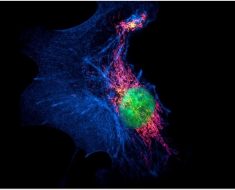Editor’s note: Find the latest COVID-19 news and guidance in Medscape’s Coronavirus Resource Center.
Female nurses are at significantly greater risk of dying by suicide than physicians in findings that contradict previous research suggesting doctors are at greatest risk.
Results of a large retrospective cohort study show that nurses of both sexes were 18% more likely to die by suicide, compared to individuals in the general population. In addition, compared to female physicians, the suicide risk among female nurses was 70% higher.
“The main takeaway is that the risk of suicide among nurses is twice that of the general population and even higher than that among physicians, a population known to be at high risk,” lead author Matthew Davis, MPH, PhD, associate professor, Department of Systems, Populations, and Leadership, University of Michigan School of Nursing, Ann Arbor, Michigan, told Medscape Medical News.
The study was published online April 14 in JAMA Psychiatry.
Focus on Physicians
Compared to the general public, healthcare workers are at higher risk for suicide, but most studies of suicide have focused on physicians, Davis said.
Although “there were several older studies hinting that there might be a difference in suicide risk among nurses,” the data were insufficient to “make an overall conclusion,” he noted.
For that reason, his group “set out to make the best estimates possible” by using a large dataset from the National Violent Death Reporting System of the Centers for Disease Control and Prevention spanning the years 2007 to 2018 and focusing on suicides by individuals aged 30 years and older (n = 159,372 suicides).
Additional workforce data were acquired from the US Bureau of Labor Statistics and the Association of Medical Colleges State Physician Workforce Data.
An important area of focus was method of suicide.
“The reason we looked at this is because people who work in healthcare have easier access to medications and know how to use them to overdose, which also increases their risk,” Davis said in a press release.
Enormous Job Strain
The researchers identified 2374 suicides among nurses, 857 suicides among physicians, and 156,141 suicides in the general population.
Compared with the general population, nurses who died by suicide were more likely to be women, less racially diverse (non-Hispanic White), and more likely to have been married.
Table. Characteristics of Individuals Who Died by Suicide
| Characteristic | General population | Nurses | Physicians |
|---|---|---|---|
| Mean (SD) age | 53.1 (14.7) years | 52 (11.8) years | 59.8 (15.3) years |
| Sex | 22.2% female | 80.5% female | 15.6% female |
| Race | 86.9% Non-Hispanic White | 91.2% non-Hispanic White | 84.5% non-Hispanic White |
| Never married (P < .001) | 21.6% | 14.2% | 13.4% |
Rates of suicide were higher among nurses than among the general population, with a sex-adjusted incidence for 2017–2018 of 23.8 per 100,000, vs 20.1 per 100,000 (relative risk [RR], 1.18; 95% CI, 1.03 – 1.36]).
The difference between suicide rates among female nurses and among women in the general population was even more striking: In 2017–2018, the suicide incidence among nurses was 17.1 per 100,000, vs 8.6 per 100,000 in the population at large (RR, 1.99; 95% CI, 1.82 – 2.18).
“In absolute terms, being a female nurse was associated with an additional 8.5 suicides per 100,000 (7.0 – 10.0) compared with the general population,” the authors report.
In contrast, overall physician suicide rates were not statistically different from those of the general population (RR, 1.01; 95% CI, 0.79 – 1.30) except during the period 2011–2012 (11.7 per 100,000; 95% CI, 6.6 – 16.8; vs 7.5 per 100,000; 95% CI, 7.2 – 7.7).
Clinicians of both sexes were more likely to use poisoning and less likely to use a firearm, compared to individuals in the general population who died by suicide. For example, 24.9% (23.5% – 26.4%) of nurse suicides involved poisoning, compared to 16.8% (16.6% – 17.0%) of suicides in the general population.
Toxicology reports showed that the presence of antidepressants, benzodiazepines, barbiturates, and opiates was more common in clinician suicides than suicides in the general population.
Davis suggested the higher risk for suicide among nurses compared to physicians might be attributed to “high job demands — for example, nurses provide the majority of bedside care, work long shifts in stressful environments, and have less autonomy.
“Healthcare workers and friends and family of healthcare workers need to be aware of mental health issues and suicide risk that can be associated with the job and, most importantly, recognize those who may be struggling and encourage them to get help by calling the National Suicide Prevention Lifeline,” he said.
Other potential contributors include “avoidance of mental health services due to stigma and greater access to the means to commit suicide via medication,” Davis noted.
Benchmark Research
Commenting on the study for Medscape Medical News, Constance Guille, MD, MSCR, professor in the Department of Psychiatry and Behavioral Science, Medical University of South Carolina, Charleston, South Carolina, noted that nurses are “predominantly female” and that women tend to be twice as likely as men to experience depression, which is a major risk factor for suicide. Thus, this population is particularly vulnerable.
One reason the investigators did not find that suicide rates were higher among physicians is that the healthcare professionals whom the researchers studied were older than 30 years. Thus, the study “excludes younger physicians in early practice or training, who likely do have higher suicide rates than the general population,” she suggested.
Guille, who is the author of an accompanying editorial and was not involved with the study, recommended “taking a public health approach, implementing preventative interventions, identifying people at high risk, providing treatment for healthcare professionals struggling with mental health problems, and destigmatizing help seeking.”
She encouraged clinicians to “reach out to colleagues who are struggling in a way to help them seek services and check in with them because it’s helpful when peers reach out.”
Davis noted that these disturbing trends will likely increase in the aftermath of the COVID-19 pandemic. “The pandemic has placed enormous strain on the healthcare workforce, and we fear this may have made the situation even worse.”
The current findings “will serve as a benchmark for future comparisons,” he said.
No source of funding for the study was reported. Davis has received consulting fees as a statistical reviewer for the journal Regional Anesthesia and Pain Medicine. The co-authors have disclosed no relevant financial relationships. Guille has received grants from the National Institute on Drug Abuse, the American Foundation on Suicide Prevention, and the Duke Endowment and serves on the advisory board and speakers bureau of Sage Therapeutics.
JAMA Psychiatry. Published online April 14, 2021. Abstract, Editorial
For more Medscape Psychiatry news, join us on Facebook and Twitter.
Source: Read Full Article





